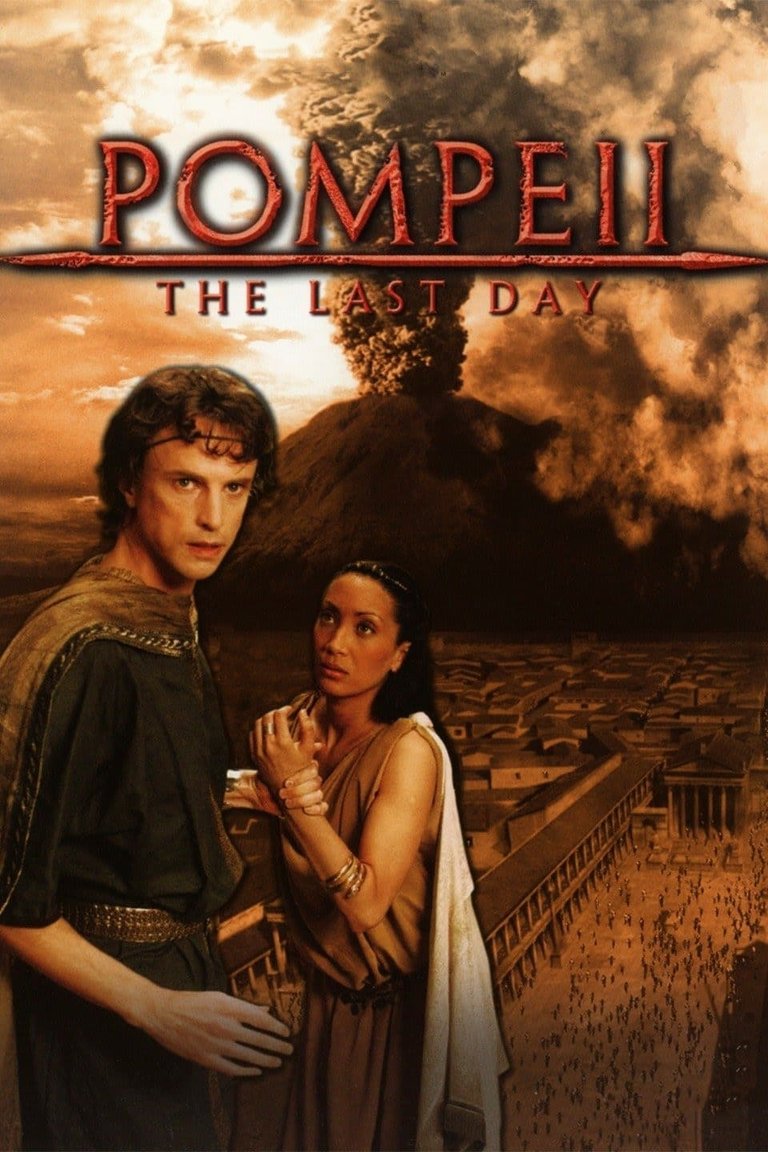Television Review: Pompeii: The Last Day (2003)

In the annals of natural disasters, few events have captivated the collective imagination like the eruption of Mount Vesuvius in 79 AD. While subsequent catastrophes may have claimed more lives or reshaped civilisations, the destruction of Pompeii and Herculaneum holds a macabre allure. The volcanic ash that entombed these cities paradoxically preserved them, freezing a snapshot of Roman life in time and offering archaeologists—and filmmakers—an unparalleled window into antiquity . Pompeii, in particular, has become a symbol of both human fragility and historical curiosity, inspiring countless cinematic interpretations. The BBC’s 2003 docudrama Pompeii: The Last Day, directed by Peter Nicholson, joins this lineage, attempting to blend scholarly rigour with dramatic spectacle. While it captures the visceral horror of the eruption, its execution falters under the weight of its ambitions.
Pompeii: The Last Day emerged as part of a wave of BBC historical docudramas, following the success of Building the Great Pyramid (2002) and airing shortly after Colosseum: Rome’s Arena of Death (2003). These productions shared a template: CGI-enhanced reconstructions, academic narration, and dramatised vignettes. Pompeii even nods to its predecessor Colosseum through the cameo of Tiberius Claudius Etychus, a character played by Nicholas Chagrin, linking the two projects thematically. Yet, where Colosseum thrived on the visceral energy of gladiatorial combat, Pompeii struggles to balance its educational aims with narrative coherence, leaning heavily on melodrama to humanise its doomed subjects.
The film’s premise—reconstructing the final hours of Pompeii’s residents—relies on archaeological evidence and the eyewitness account of Pliny the Younger (played by Martin Hodgson). Characters such as Julius Polybius (played by Jim Carter), a wealthy politician, and Stephanus (played by Jonathan Firth), a social-climbing fuller, are grounded in graffiti and artefacts uncovered at the site. Pliny the Elder (Tim Pigott-Smith), the Roman scholar who perished during a rescue mission, anchors the narrative in historical fact, while his nephew’s writings provide a chilling voiceover. However, the film’s adherence to authenticity is uneven. While the inclusion of figures like Celadus the Thracian (played by Robert Whitelock), a gladiator, adds texture, their storylines often veer into contrived melodrama, diluting the documentary’s scholarly credibility .
Shot partly in Tunisia and Ealing Studios, Pompeii: The Last Day suffers from a disjointed aesthetic. The decision to cast recognisable British actors—Jim Carter’s Polybius and Tim Pigott-Smith’s Pliny—injects star power but undermines immersion, with their anachronistic English dialogue clashing against the Mediterranean backdrop. The script, co-written by Nicholson and Edward Canfor-Dumas, oscillates between stilted exchanges and overwrought emotional beats. For instance, a subplot involving Stephanus’ affair with his enslaved lover Hedone (played by Inika Leigh Wright) feels gratuitous, serving more to sensationalise than illuminate. The film’s reliance on CGI to depict Vesuvius’ eruption, while technically competent for 2003, lacks the visceral impact of modern effects, rendering the disaster oddly sanitised.
The documentary’s greatest flaw lies in its tonal inconsistency. Narrator Alisdair Simpson’s sober, scholarly commentary—detailing pyroclastic surges and archaeological discoveries—clashes jarringly with the hammy dramatisations. A scene where Pliny the Younger recounts his uncle’s death is undercut by a maudlin score, reducing historical tragedy to sentimental fodder. Similarly, the film’s conclusion, which speculates on Vesuvius’ future eruptions, leans into alarmist rhetoric unsupported by scientific consensus, undermining its otherwise meticulous research.
Two decades on, Pompeii: The Last Day remains a product of its time—a well-intentioned but flawed attempt to marry education and entertainment. While it garnered acclaim for its Emmy-winning sound design and BAFTA nominations, its legacy is overshadowed by its narrative missteps Yet, the enduring fascination with Pompeii ensures that new interpretations will emerge. Advances in AI-driven archaeology, such as deciphering carbonised scrolls from Herculaneum, promise fresh insights into Roman life. Future documentaries, armed with cutting-edge technology and a more nuanced script, may yet do justice to the tragedy that Pompeii: The Last Day could only partially capture.
RATING: 4/10 (+)
Blog in Croatian https://draxblog.com
Blog in English https://draxreview.wordpress.com/
InLeo blog https://inleo.io/@drax.leo
Hiveonboard: https://hiveonboard.com?ref=drax
InLeo: https://inleo.io/signup?referral=drax.leo
Rising Star game: https://www.risingstargame.com?referrer=drax
1Inch: https://1inch.exchange/#/r/0x83823d8CCB74F828148258BB4457642124b1328e
BTC donations: 1EWxiMiP6iiG9rger3NuUSd6HByaxQWafG
ETH donations: 0xB305F144323b99e6f8b1d66f5D7DE78B498C32A7
BCH donations: qpvxw0jax79lhmvlgcldkzpqanf03r9cjv8y6gtmk9